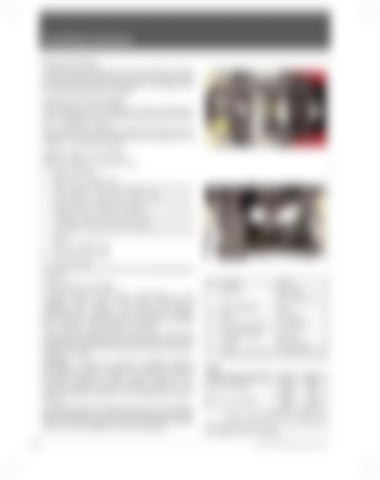Cooling System Draining the System Two drain plugs must be opened. One is on LH side of crankcase and one on radiator bottom tank. To speed up draining, remove the radiator cap. Ensure that the drains are not clogged. Close the taps after draining is complete. Cleaning out Dirt and Sludge Drain cooling system as directed above. Fill the cooling system with a solution of 2.2 lb. of ordinary baking soda to 8.0 litres (2.11 US Gallons) of water. Do not replace the radiator cap. Operate the engine until the coolant is hot. Drain, flush with clean water and refill with a rust inhibitor or anti-freeze solution.
A
Adding Coolant to the System Allow the engine to cool if it is hot. 1. Open the Hood. 2. Remove the radiator cap. 3. Fill the radiator from fill neck (A) with clean coolant upto a level approx. 2" below the radiator neck. 4. Start the engine and let it idle to remove air from the system. Coolant level in radiator will reduce. 5. Slowly pour coolant into the radiator until the coolant level in radiator does not go down further. 6. Fill coolant in surge tank from fill neck (B) upto the Max level mark. 7. Refit the radiator cap. 8. Shut down the engine. 9. Close the hood. Ensure that the filler cap is clean and free of dirt particles before replacing. Cooling System Protection A common cause of the engine overheating is a rust clogged cooling system. Rust causes overheating by interfering with circulation and cooling. The tractors are filled with a mixture of new low silicate antifreeze (50% - antifreeze - 50% water) with a rust inhibitor in it. Fill upto the mark given. (approximately 2.4 gallon) Use of approved supplemental corrosion inhibitor along with ethylene glycol will add increased rust prevention, reduce scale formation, minimize cylinder wall erosion & reduce foaming or tendency to foam. Antifreeze : There are numerous antifreeze products marketed today. Diesel engines are adversely affected by the additives added to protect the aluminum surfaces. Antifreeze suitable for diesel engines conforms to an industry recognised standards which limits silicates to 0.1%. Once silica-gel has formed it is very difficult and costly to remove. Low silicate antifreeze is available through out the United States. We are listing below some low silicate antifreezes that meet GM 6038 M formulation specification. There may be other suppliers who can make available low silicate antifreezes. 72
B
A
No.
Company
Product
1 Texaco (1)
2354 / 2055 Startex (Was JC-04)
2
BASF WYANDOTTE
241-7
3
Shell
ShellZone-LS
4
International Harvester
I.H. Antifreeze
5
Old Water Trading
Full Force
6
Conoco
Fleet Antifreeze
7
Northern Petrochemical
All Weather (NPC 220)
NOTE: % Anti Freeze / % Water Freeze Protection
50/50 60/40 0 –34 F –640F 0 –36.67 C –530C Boil over protection +2650F +2750F 1290C 1350C 2 (with 13 psi (0.91kg/cm ) radiator cap)
Recommended change period : 1 year or when ever the radiator water is drained. 6065 / 6075 2WD & 4WD Open Station Rev 01






























